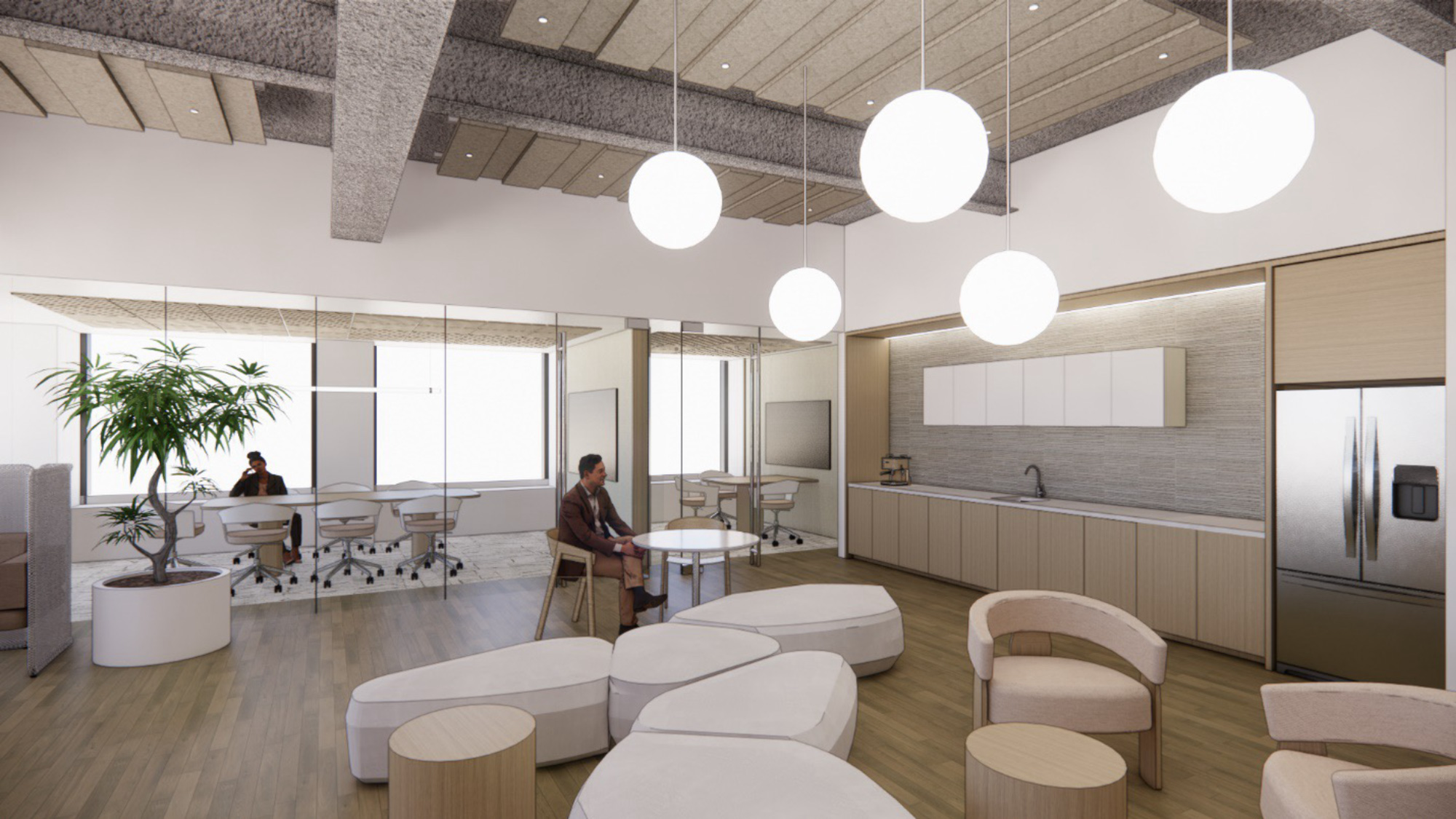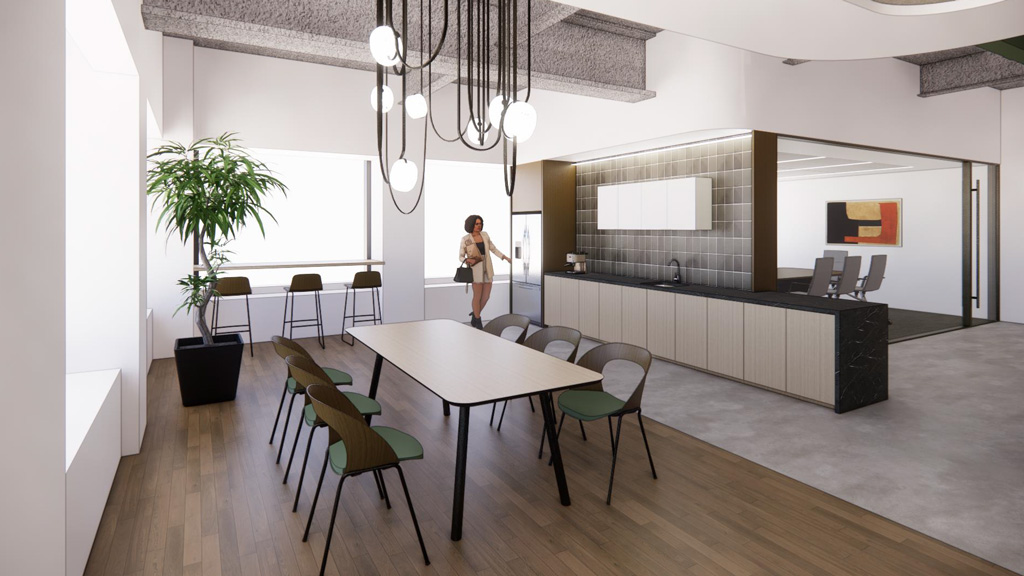Unlocking Value in Class A High-Rises: The Strategic Advantage of Spec Suites
July 30, 2025 | By Mary Faria
In today’s evolving commercial real estate landscape, landlords of Class A high-rise buildings face a clear but complex challenge: how to attract quality tenants quickly and maximize ROI in an environment marked by shifting workplace expectations and increased competition.
One strategy has emerged as a clear winner across markets — the spec suite.
Whether you’re a landlord, property manager, investor, broker, or designer, understanding the strategic value of building out speculative suites — pre-designed, move-in-ready office spaces — is key to staying competitive and keeping occupancy high. From reducing downtime between leases to elevating tenant experiences, spec suites are no longer a “nice to have” — they’re a necessity.
What Is a Spec Suite?
A spec suite is a pre-built, fully designed office space created without a specific tenant in mind. It typically includes high-quality finishes and fixtures, a practical layout including open work areas, private offices, conference rooms, IT closet, and pantries, and is ready for immediate occupancy.
In Class A commercial towers, spec suites are becoming a go-to strategy for converting vacancy into value.
Why Spec Suites Work: 3 Key Benefits
1. Faster Lease-Up TimesVacancy is expensive. Every day a space sits empty, revenue is lost — not just in rent, but also in momentum. Spec suites dramatically cut down on the time it takes to lease a space by reducing or removing common obstacles.
- Move-in ready: Tenants are increasingly drawn to turnkey solutions. Many companies, especially those in growth mode or transitioning to hybrid models, don’t want to wait months for a custom-built suite. A well-designed spec suite allows tenants to move in almost immediately.
- Shorter decision cycles: Seeing is believing. Spec suites allow prospective tenants to walk through a finished space, visualize themselves working there, and make faster leasing decisions.
In today’s market, design matters more than ever. Tenants are using their office spaces as recruiting and retention tools, and they want environments that feel modern, flexible, and aligned with their brand.
A thoughtfully designed spec suite can:
- Showcase premium materials and finishes.
- Include flexible zones for collaboration and heads-down work.
- Offer plug-and-play tech infrastructure.
- Reflect a layout that supports post-pandemic work norms (think: fewer perimeter offices and more team areas, or “less me, more we”).
When done well, spec suites can help your property stand out from the competition — especially when multiple spaces in the same submarket are available.
Yes, spec suites require upfront investment. But over time, they consistently outperform shell spaces on multiple fronts:
- Higher asking rents: Well-designed, furnished spaces often command premium pricing.
- Shorter downtime: Reduced vacancy means more consistent cash flow.
- Reduced tenant improvement costs: By investing in a spec suite once, landlords can avoid costly and fragmented construction negotiated by individual tenants.
Even if tenants request minor modifications, the base infrastructure (HVAC, lighting, finishes) remains intact, reducing future capital expenditure.

The Strategic Role of Design/Build Teams
From a design/build perspective, the success of a spec suite program hinges on strategy and execution. That means:
- Market research: Understanding what today’s tenants are looking for is essential to creating layouts and finishes that resonate.
- Speed and scalability: Being able to build out multiple suites quickly and to a consistent quality standard sends great product to market fast.
- Cost control: Design firms that understand landlord objectives can maximize impact while minimizing spend, without cutting corners.
The best spec suites strike a balance between aesthetic appeal and operational efficiency. They’re not over-designed, but they never feel generic.
A Broker’s Perspective: Leasing with Confidence
From the brokerage side, spec suites offer a powerful selling tool:
- Visual impact: Brokers can showcase space that’s tangible and presentable — no more walking clients through raw drywall and trying to sell them on “potential.”
- Leasing velocity: Spaces that are ready to go lease faster.
- Tenant flexibility: For companies with uncertain headcounts or shorter time horizons, spec suites offer a flexible, lower-risk entry point into a premium building.
Brokers are also better equipped to pitch multiple suites with confidence when they know the product is consistent, well-executed, and designed with the tenant in mind.

Best Practices for Landlords
To get the most from your spec suite investment, consider these tips:
- Bundle suites by floor or stack: Creating a series of suites in proximity allows for phased leasing strategies and potential suite consolidation over time.
- Keep a pipeline: Always have 1–2 spec suites in the works. A steady pipeline reduces downtime and supports ongoing leasing efforts.
- Standardize where it counts: Use standardized elements such as lighting, millwork, and materials across suites to reduce procurement time and cost, but vary layout and design details to create visual differentiation.
- Partner with experienced teams: Choose design/build and brokerage teams that understand the Class A market and can deliver on tight timelines with predictable quality.
- Consider packaging with additional amenities: Shared conference suites and breakout areas that have access to the outdoors (think loggias or terraces) are amenities that can set your spec suites apart in the market.

The Bottom Line
Spec suites aren’t just about filling space faster — they’re about creating value, enhancing tenant experience, and keeping your property at the top of its game in a competitive market. When executed with intention and expertise, spec suites transform the leasing process from reactive to strategic. For landlords and investors looking to future-proof their high-rise assets, they represent a clear and compelling return on investment.
For media inquiries, email .

